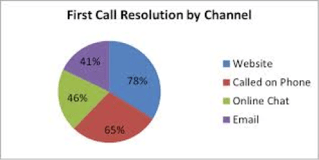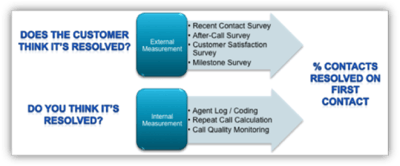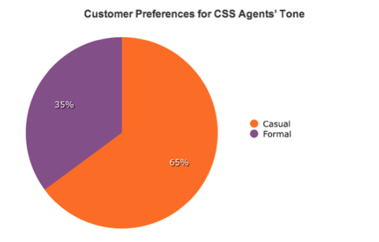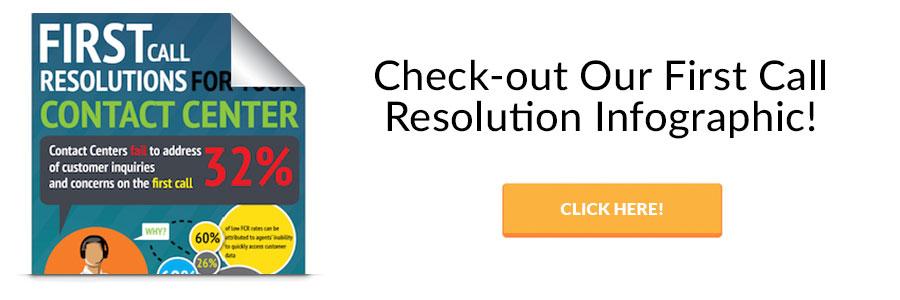First Call Resolution has been the subject of many recent studies, which show that a high FCR rate is vital to the success of your contact center. In fact according to ICMI, 12% of customers leave if it takes 2 or more calls to resolve their issue. But while the concept of FCR may seem simple, “properly resolve customer issues on the first call,” putting this into practice and measuring this “metric” is a lot more complicated than simply focusing on a percentage. Here are a few tips to boost FCR, and to ensure the FCR percentage you are recording is an accurate reflection of your call center.

1. FCR is not limited to calls alone. With multichannel communications quickly becoming the new standard, your measurement of FCR should focus on interactions across all channels, not solely voice. If someone enters a chat, but the chat is not working properly, or they lose the connection, their question is not answered properly so they have to then call in – that phone call may be the first call, but it is not the first interaction, so the frustration of the customer is carried over to that second form of communication.
2. The word resolution has multiple meanings. While you may think that the call has been resolved, the customer may not. Just because they don’t call back, doesn’t mean that they had a good customer service experience.A good example of this came when I called a company to cancel a trial membership. I had ordered their product and exchanged merchandise a few times, but came to the conclusion that the merchandise simply didn’t fit well. Not only did the agent repeatedly offer information about exchanges, but went on to say that the membership fee couldn’t be refunded, but could be credited for points towards future merchandise. Was the agent even listening? No. They were trying to sell me something that I had already told them did not work for me. I escalated to a supervisor and my needs were eventually met, but while the call was resolved in “one go” from their standpoint, it was a negative experience for me.

Resolution needs to be measured not simply as a percentage – ( 93% of calls resolved), but through follow up with the customer and notations from the agent.
3. Agent training. Training is not limited to how the agent is able to use the call center, or what knowledge they have about the product, it is vital for how the agent is able to listen to the customer, assess needs, and meet those needs.
There are three key categories for training:
- 1. Software use. Agents need to know how to use their software efficiently and properly, and should be able to resolve minor technical issues on their own—and if not, they should understand the steps that must be taken to report an issue.
- 2. Product knowledge. The agent needs to be well versed in what they are selling, as well as any promotions that are current or coming up. The more they know, the more adaptable they are to customer questions and the more confident they present themselves on the phone/chat/email.
- 3. Tone. Customers take into account not only what the agent knows, but how the message is delivered. If your agents sound like robots, who circle back to the same 5 lines, customers will get frustrated when the response doesn’t answer the question they have. Having a casual demeanor puts customers more at ease. The whole point of talking to a live agent is to avoid the automated robot systems that can be so infuriating, right?

Focusing on all these aspects of training will not only help your FCR percentage, but will aid in overall customer satisfaction that simply cannot be measured by FCR alone.
4. Give your agents the tools they need. Piggybacking on point number 3, if agents don’t have the tools they need, the less likely they are to succeed. You could have 10 superstar agents, but if the system drops calls, or they don’t have a chat feature and have to respond to email, you are putting them at a disadvantage.
Don't let your agents wander about in a confused mess of windows, with old data, and inefficient connections—provide them with a streamlined call center software solution that will help them do their job more efficiently. The more time they spend on the phone, with access to the right data, the higher their call volume and the more effective each call is.
5. Focus on call types that are frequently escalated– What are your customers calling about? Most likely, (though one can hope) it’s not to pat you on the back and tell you how amazing your product is. If the new release of your product is constantly rebooting itself in Japanese, your agents need to know what level of expertise is needed to solve this issue. If a customer calls in irate and screaming, should a supervisor be immediately notified? Focusing on the type of calls that come in will allow more resources to be dedicated to those calls and for a more efficient process to be put in place to deal with them on the first try.
6. Not all calls are resolved on the first try. While 99% FCR rate would be amazing, not only is it unrealistic, it is not necessarily a good thing. FCR is great most of the time, but some issues simply cannot be solved with one phone call. Complex issues that require testing, multiple levels of customer support and walkthroughs require more time and dedication. If customers were to simply receive one phone call trying to resolve an extremely complex issue in one fail swoop, this agent has failed. Step by step processes and consistent communication build a relationship with that customer that even one amazing phone call could not. So while FCR is vital, it should not be the only thing your agents strive for to measure their success.





